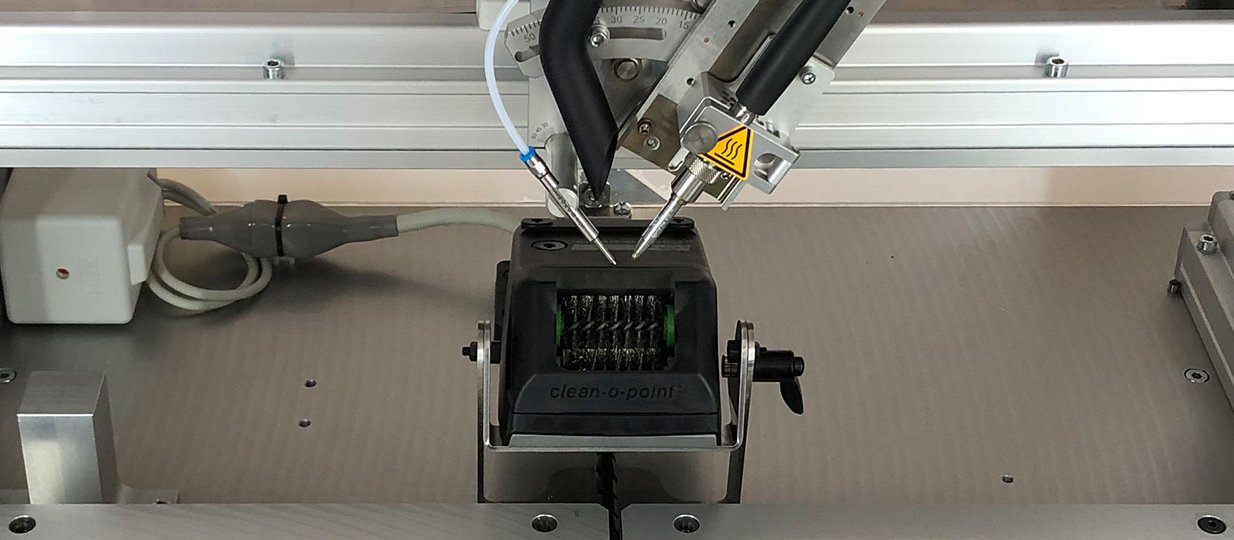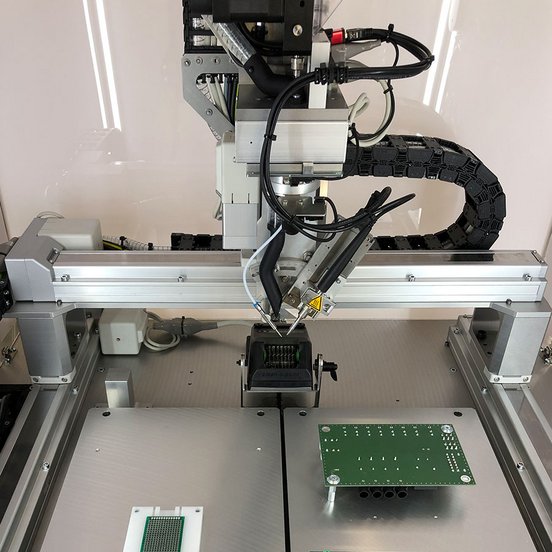Electronic manufacturing is moving towards robotic soldering.
Electronics manufacturers rely on three key technologies for soldering: wave soldering, convection reflow soldering, and selective soldering. In addition, hand soldering is used for components that cannot be soldered by the three automated processes. Components used in hand soldering include many types of PTH components and connectors. Engineers are looking for new solutions due to the lack of trained personnel and the need for processes that are more precise, repeatable, and efficient. Because of high labor costs and a limited number of skilled workers, the need is heightened in places like northern California. Silicon Valley is further exacerbated by these factors as it is a hub for prototyping and NPI manufacturing. The solution for many engineers is to use a robotic or automated soldering robot.

When picking a robotic or automated soldering robot, it is important to look at the following factors:
Board Size
While it may seem obvious, it is crucial that the robot has the capacity to handle both the boards you have now and any future requirements you may have. One such feature to consider is a robot with two drawers. They can be used together for large boards or separately for smaller boards. When used separately, one board is soldered in the first drawer while the second drawer is being prepared for soldering. This feature enables near-continuous operation and little downtime.
Ease of Use
The system should have an easy-to-use and intuitive user interface to allow fast programming. Many systems incorporate a camera that allows the programmer to teach the robot the process that later will be repeated by the operator. Once the system is programmed, it should be easy to run for an operator, regardless of skill level.
Range of Applications
In the same way that current and future board sizes are important, it is vital to consider the range of applications your robotic soldering systems can achieve. Boards are becoming smaller, more densely populated, and harder to access. The robotic systems that are multi-axis allow accessibility to all solder joints. It is common to see robots with x, y, rotation, and multiple z axes.
The “engine” of the solder robot is the soldering iron and this also needs to be suitable for your current and future needs. A powerful, high wattage iron allows you to solder high mass boards and solder joints that are connected to ground planes. The user interface in conjunction with the soldering iron should allow you to carry out both point-to-point soldering and drag soldering tasks. Both of these tasks are simplified by having a good selection of soldering tips available for the system you select. A key benefit to automating the process is to achieve greater efficiency. Greater efficiency means creating more solder joints and using more soldering tips. An expensive soldering tip series can be a very expensive operating cost for your system.

Process Repeatability/Precision/Quality
Once the robot is programmed, the expectation is that the system will be precise, repeatable, deliver high quality solder joints, and not damage boards. Systems typically state the repeatable accuracy of the robot. Systems that include a programmable tip cleaning station can increase quality. Board damage can be minimized by systems that monitor the position and pressure of the soldering tip on the board, which is especially important on high value boards. The amount of solder deposited to the joint is vital to its overall quality and look. Robotic systems with a solder feeder that enables precise forwards and backwards advancement of the solder wire achieves this.
Safety
Operator safety is paramount. Robotic systems with drawers enable boards to be loaded into the machine safely and efficiently. ESD safe hoods (or similar enclosures) should be used in the area where the robot is working. More fumes will be generated as a bi-product of more solder joints being created by high efficiency robotic systems. Integrated fume extraction systems provide a safer environment for personnel.
Summary
While the electronics manufacturing industry has evolved with increased automation, the hand soldering process has been slower to adapt, but automated systems are now available. These systems reduce the reliance on qualified operators, while improving accuracy, efficiency and quality. Robotic soldering processes need to be easy to program and execute. The best robotic soldering systems are designed to meet the needs of today and cater to the needs of the future.
